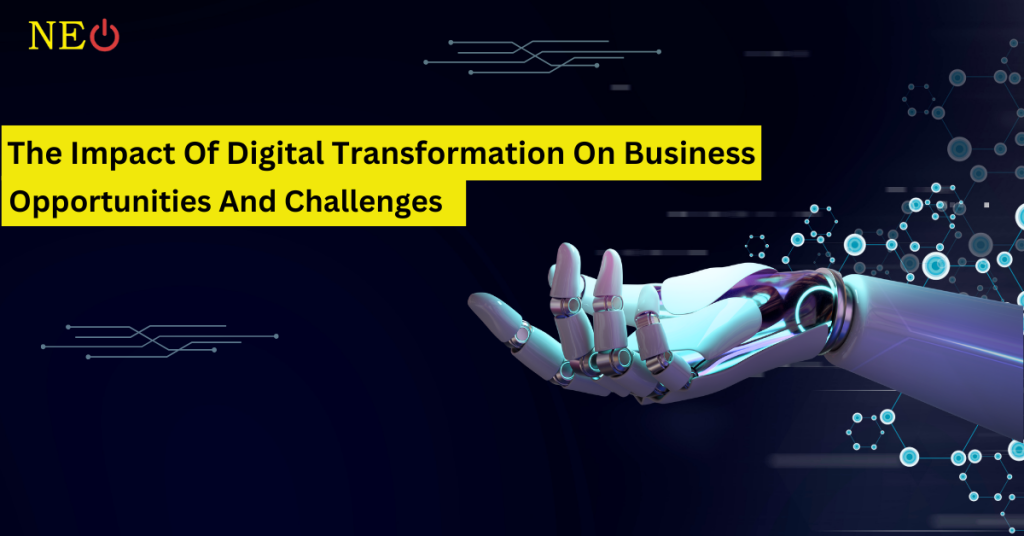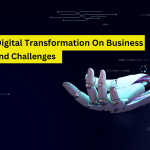Digital transformation in business entails leveraging new technologies such as artificial intelligence and cloud computing to accelerate growth, streamline operations, and gain a competitive advantage. Its impact may be observed across many industries, owing to the expansion of online commerce and the continuous digitization of business and society.
It has also significantly impacted many established business strategies. These have evolved swiftly as a result of the rise of online behemoths like Amazon and Google, digitally native niche businesses like Airbnb, Expedia, and Netflix, as well as significant investment by existing sector heavyweights like Walmart and Tesco.
Companies like these, as well as thousands of others, have used proven business models and integrated technology to drive innovation and develop new forms of customer experiences that prioritize convenience, value, and efficiency. Simultaneously, new digitally native business models have evolved, including freemium and software-as-a-service. This article examines how "traditional" business models have altered and new models have developed, generating new opportunities while posing new obstacles.
What Is A Business Model?
A business model is simply a company's strategy framework for creating value via the delivery of its products and services. Businesses grow by developing new and distinctive business models or refining old ones to generate income, improve operational efficiency, and strengthen customer relationships.
Manufacturing businesses, for example, manufacture items from raw materials, distribute them to merchants and customers, and generate revenue through sales. The approach comprises efforts taken to improve efficiency in manufacturing and distribution processes, as well as increase demand for its products through marketing.
Businesses can enhance components of the model by utilizing evolving technologies to raise the amount of value generated, lower costs associated with operations and procedures, and even create new products and services that are more aligned with their customers' changing demands.
Business Model 1: Retail
This approach entails selling things to end users or in bulk (wholesale) to another store who will sell them. It encompasses traditional brick-and-mortar retailers who operate physical storefronts, e-commerce enterprises that operate online, and a variety of hybrid business models that fall somewhere in between.
Over the last two decades, digital transformation has had a tremendous impact on retail, with the rise of e-commerce being the most visible example. Online-native businesses (such as Amazon, eBay, and Alibaba) use AI and analytics to provide customers with tailored recommendations and shopping experiences, as well as smart pricing and intelligent logistics.
As a result, established retailers such as Walmart and Tesco have made significant investments in digital technologies to improve consumer experiences, optimize their supply chain processes, and provide omnichannel customer services.
Challenges include the increased requirement for organizations to deal with enormous amounts of sensitive client data, such as personal information, purchasing habits, and financial affairs. This raises issues with regulatory compliance, data privacy, and security.
Business Model 2: Manufacturing
As said in the beginning, this entails purchasing raw materials and producing finished products or components for items that will be manufactured by others further down the chain.
It's another classic model that has existed for thousands of years but is being rapidly disrupted by the introduction of numerous new transformational technologies. These include the Internet of Things (which enables smart factories and predictive maintenance), robotics technology, and 3D printing (also known as additive manufacturing).
These innovations are frequently referred to as industry 4.0, as they effectively represent the fourth stage of the Industrial Revolution, following mechanization, electrification, and computerization.
Some of the most significant obstacles here are the massive investments that organizations must make in infrastructure in order to benefit. There are also issues in training and hiring to guarantee that they have individuals with the necessary abilities to adopt and run these technologies. Furthermore, the ethical and regulatory ramifications of large-scale automation deployment in industrial enterprises must be considered, particularly in terms of the impact on human workforces.
Business Model 3: Service-Based Businesses
These are enterprises that offer services rather than products, ranging from accountancy, financial, and legal to hospitality, healthcare, travel and tourism, events, and personal services such as hairdressing and personal training. Newer business models in this category include software-as-a-service products like Microsoft 365, as well as entertainment subscription services like Netflix and Spotify.
Many organizations that were previously recognized for creating products can now convert to a service-based delivery model thanks to digital transformation. Notably, this includes not just the software providers mentioned above, but also vehicle manufacturers such as Volvo and Porsche, household appliance makers such as Nespresso, and fitness products such as Peloton and Fitbit.
This enables businesses to generate predictable, repetitive income streams rather than relying on one-time payments, while also providing new consumer experiences, such as receiving upgrades to new goods and models as they become available. Businesses that provide these subscription services, as well as professional services organizations such as banks, accountants, and law firms, can use data, artificial intelligence, and analytics to understand how customers use and interact with their services, predict and prevent customer churn, and personalize their offerings on a large scale.
Customer behavior changes more fast in the digital era, making loyalty more difficult to maintain. After all, switching providers or discovering new options is always just a screen tap or mouse click away. To counteract this, service companies strive to deliver better customer service while also developing reward and loyalty programs to foster "sticky" ties.
Where Do Digital Transformation and Business Models Go From Here?
As the influence of digital transformation rises, we will see the rise of newer business models such as freemium, ad-supported, and crowd-funded businesses. Freemium models, in which a basic version of a service or product is supplied for free but more advanced features are reserved for subscribers, can be improved to produce more tailored experiences. Ad-supported businesses will profit from more precisely targeted advertising and personalized messages. All firms will be able to better optimize their pricing strategies by providing varying levels of service and support in response to demographic variations and changing client purchasing patterns.
At the same time, privacy concerns, changes in regulatory and compliance requirements, and the growing impact of cybercrime on organizations will remain constant challenges. These problems must be considered regardless of the business strategy used. This means that anticipating and responding to them must become a critical component of business strategy.
It will become increasingly vital for all firms to strike a balance between the desire to transform and develop and their ethical and regulatory duties. The persistent skills crisis in technology is likely to generate additional impediments, emphasizing the importance of investing in upskilling and training.
However, as technology advancement accelerates, we should expect to see business models adapt even more. Leaders will need to embrace a mindset of continuous awareness, education, and creativity. Embracing these changes while knowing the risks and challenges they bring is the key to thriving, regardless of what alterations come next.









